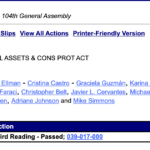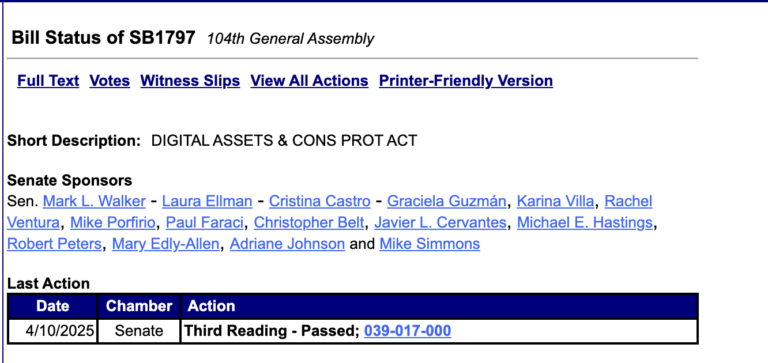Your browser does not support the <audio> element.
“We will drill, baby, drill!” So thundered Donald Trump in his speech on July 19th at the Republican National Convention, where he accepted his party’s nomination as its presidential candidate. Encouraged by rapturous applause, he warmed to the theme, vowing to boost domestic production of fossil fuels to “levels that nobody’s ever seen before”, making America so “energy dominant” that it “will supply the rest of the world”.
Mr Trump is assiduously courting oil bosses. In April he invited a group of them to Mar-a-Lago, his private club in Florida, and promised to scrap what they see as President Joe Biden’s onerous regulations on the industry if returned to the Oval Office. He asked only that they contribute $1bn to his bid for re-election, arguing that the figure would be a bargain compared with the windfall they would receive from lower taxes and looser rules.
Mr Trump and his team are keen both to set America’s oil industry free and to unpick Mr Biden’s clean-energy agenda. His supporters invoke vast undeveloped reserves of oil in Alaska and the Gulf of Mexico that would gush forth if only the green boot were removed from the industry’s throat. Robert O’Brien, who served as national security adviser during Mr Trump’s presidency, suggests that “the United States could be producing millions of barrels more per day.” Yet the Trump team’s plans are likely to be much less consequential for American energy, both brown and green, than it makes out.
America’s oilmen have long complained about Mr Biden, and are likely to have similar reservations about Kamala Harris, the vice-president and almost certain Democratic nominee for November’s presidential election after Mr Biden withdrew from the race on July 21st. His signature legislative accomplishment, the Inflation Reduction Act (IRA), for which Ms Harris cast the tie-breaking vote in the Senate, explicitly seeks to encourage the use of low-carbon energy through huge subsidies for green technologies.
Mr Biden has also regulated the fossil-fuel industry’s emissions of methane, a potent greenhouse gas, and in January paused the approval of permits to export liquefied natural gas (LNG), enraging bosses. The American Petroleum Institute, a trade association, has decried a “regulatory onslaught”. One lobbyist in Washington grouses that the White House makes the oil industry feel as though it is “unwelcome today and will become more unwelcome going forward”.

Yet for all the complaints, America’s fossil-fuel industry has done remarkably well under Mr Biden. Oil-and-gas production last year was greater than at any point during Mr Trump’s term (see chart 1 ). Mr Biden’s administration issued more licences for drilling during its first three years than Mr Trump’s did (see chart 2). Exports have soared. Last year the president approved Willow, an $8bn oil project in Alaska opposed by environmentalists. The profits and dividends of America’s oil giants have grown fatter under Mr Biden. The Dow Jones US Oil and Gas Index, which tracks the market value of the industry, sputtered on Mr Trump’s watch. It has more than doubled under Mr Biden’s, helped by a surge in prices.

One energy expert who has advised former Republican presidents acknowledges that “no federal policy meaningfully restrains near-term production” of oil or natural gas, and sees “no options that would enable oil-and-gas production to rise” by much more than what the market would have dictated anyway. Harold Hamm, a shale billionaire and ardent supporter of Mr Trump, declared recently that the industry is “producing everything we can”.
Over the long run, sustained hostility from a future Democratic president could theoretically dampen investment in America’s oil-and-gas resources, but such policies are not in evidence. The closest thing is the pause on export permits for LNG. That election-year wheeze, however, was halted by a federal judge earlier this month, and looks unlikely to survive.
Drill, maybe, drill
Ultimately, investment in the oil business “depends on global supply-demand balances and investor appetites”, says Kevin Book of ClearView Energy Partners, an energy-research firm. The most important factor affecting those balances is not the White House but the Organisation of the Petroleum Exporting Countries, the oil cartel that sets production quotas with the aim of managing crude prices.
It is Wall Street, moreover, not America’s government, that shapes how Big Oil adjusts its investments according to supply and demand. Since the bursting of the shale bubble, a period of reckless expansion after the financial crisis during which the cowboys of the industry burned through some $300bn of cash, investors have sought to rein in oil bosses. Rystad Energy, another research outfit, characterises the prevailing ethos in the shale patch as “persistent capital discipline”. It is not clear how much a new president would change the mood.
A victory in November for Mr Trump may also do surprisingly little to slow America’s shift towards clean power. Although Mr Trump has vowed to repeal the IRA, which he calls the “green new scam”, he will probably not be able to do so, argues Neil Auerbach of Hudson Sustainable Group, a clean-energy investor. Some four-fifths of its benefits go to Republican congressional districts.
What is more, for all their hostility to Mr Biden, brown industries are just as keen on handouts as green ones. Dan Brouillette, who served as energy secretary under Mr Trump and now heads the Edison Electric Institute, an association for America’s private-sector power utilities, has vowed to defend the IRA. One oil-and-gas lobbyist says his clients, who benefit from the law’s subsidies for hydrogen production and carbon-capture technologies, “will go to the mat” to prevent its repeal.
Green machine
A second Trump administration could still slow the greening of America’s economy by fiddling with regulations and abandoning targets for decarbonisation, notes Wood Mackenzie, one more energy-research firm. It reckons that America is on course to invest $7.7trn in low-carbon energy between 2023 and 2050, and expects that figure would drop to $6.7trn if Mr Trump were to return to the White House. That is unwelcome, given that America probably needs closer to $12trn of investment to reach net-zero emissions by 2050; but it would hardly sound the death knell for America’s green industries.
Wood Mackenzie’s analysis predates Mr Biden’s exit from the presidential race. Ms Harris may have greener instincts than her boss; during her brief presidential bid four years ago she voiced support for a ban on fracking (though she reversed her position after joining Mr Biden’s ticket). As Ms Harris targets younger voters, she is likely to “pitch climate ambition”, reckons Mr Book of ClearView. As it stands, though, she has not made any new promises to expand efforts at decarbonisation.
No matter what happens come November, America’s low-carbon economy has gained a momentum of its own. Even without subsidies, adding power to the grid with a solar farm is cheaper these days than doing so with a new coal-powered plant. Over 90% of the additional power-generation capacity coming online in America this year will be carbon-free. Big commercial customers, such as the tech giants, which need ever growing amounts of power for their data centres, have made public commitments to cut their net emissions to zero. NextEra Energy, a Florida-based utility that is one of the world’s biggest developers of clean energy, is committed to investing roughly $100bn in solar, wind, batteries and transmission by 2027 regardless of who wins the White House.
Mary Landrieu, a former Democratic senator for energy-rich Louisiana, likes to say that “you can’t run US Steel on windmills or solar panels”. Nonetheless, she is convinced that in the years since Mr Trump left office the oil-and-gas industry “has reached a tipping point in embracing a lower-carbon future”. Even fossils, it seems, can change. ■
To stay on top of the biggest stories in business and technology, sign up to the Bottom Line, our weekly subscriber-only newsletter.



















